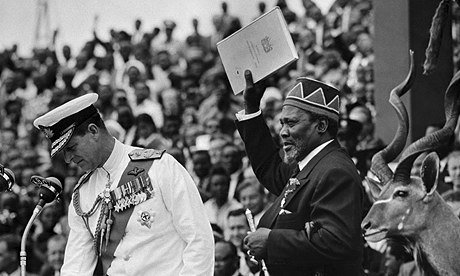Between 11th June 1920 and 12th December 1963, seventeen British colonial governors presided over the Colony and Protectorate of Kenya, shaping the country’s political, economic, and social trajectory under British rule. Their tenure marked one of the most transformative periods in Kenya’s history—culminating in independence and the eventual birth of the Republic of Kenya.
From Company Rule to Protectorate
Kenya’s colonial journey began earlier than 1920. Between 1888 and 1895, the region was administered by the Imperial British East Africa Company (IBEA) on behalf of the British Crown.
From 1895 to 1920, the territory became a British Protectorate, first known as the East Africa Protectorate (1895–1905) and later as British East Africa (1905–1920). During this period, commissioners appointed by the British Government oversaw governance.
The Colony and Protectorate of Kenya
On 11th June 1920, Kenya was formally declared the Colony and Protectorate of Kenya. This ushered in the era of the seventeen governors who ruled until independence in 1963.
The Seventeen Governors of Colonial Kenya:
- Sir Edward Northey (1920–1922)
- Sir Robert Coryndon (1922–1925)
- Sir Edward Brandis Denham (1925)
- Edward William Grigg (1925–1930)
- Sir Henry Monck-Mason Moore (1930–1931)
- Brig. Gen. (Sir) Joseph Aloysius Byrne (1931–1936)
- Sir Armigel Wade (1936–1937)
- Sir Robert Brooke-Popham (1937–1939)
- Sir Walter Harragin (1939–1940)
- Sir Henry Monck-Mason Moore (second term, 1940–1944)
- Sir Philip Mitchell (1944–1952)
- Sir Henry Steven Potter (1952)
- Sir Evelyn Baring (1952–1959)
- Sir Walter Fleming Coutts (1959)
- Sir Patrick Renison (1959–1962)
- Sir Eric Griffith-Jones (1962–1963)
- Malcolm John MacDonald (1963)
These governors presided over a complex period, which included the growth of settler agriculture, the rise of African nationalism, and the turbulent years of the Mau Mau Uprising (1952–1960).
Independence and Transition
Kenya attained independence on 12th December 1963, becoming the British Dominion of Kenya. At that point:
- Queen Elizabeth II remained Head of State.
- Jomo Kenyatta served as Prime Minister and Head of Government.
- Malcolm MacDonald, the last colonial governor, transitioned into the role of Governor-General, representing the British monarch.
This arrangement lasted until 12th December 1964, when Kenya became a Republic. Jomo Kenyatta then assumed the combined role of President, Head of State, and Head of Government.
The Kenyatta–MacDonald Relationship
Interestingly, Jomo Kenyatta and Malcolm MacDonald shared a close working rapport. At Kenyatta’s request, after the expiry of his term as Governor-General in 1964, MacDonald was redeployed as Britain’s High Commissioner to Kenya, continuing his diplomatic engagement with the new republic.
Legacy of Colonial Governance
The colonial governors left behind a deeply contested legacy. Their administration entrenched European settler dominance, enforced discriminatory policies, and suppressed African political rights. Yet, their rule also laid the groundwork for modern state institutions and infrastructure.
Kenya’s independence in 1963, and its transformation into a republic in 1964, closed the chapter on colonial governorship and opened a new era of self-rule under African leadership.





